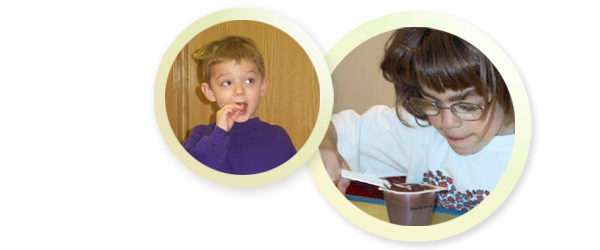Feeding Programs
Feeding and oral-motor evaluations and treatment
Feeding is essential to both health and growth. For issues of feeding, the therapist evaluates an individual's jaw, lip, and tongue movements during management of different food textures and liquids. An assessment of behavioral concerns, such as sensory issues, are also examined in relation to feeding.
It may be necessary to meet with your child's physician initially to determine that there is not an underlying medical condition that might be influencing the feeding problems. In some instances, video fluoroscopic swallowing studies may be necessary to detect aspiration or structural problems related to swallowing. A video fluoroscopic swallowing study is a live X-ray of the swallow when given a variety of food and liquid textures. This procedure is conducted at the hospital with a radiologist and Speech Language Pathologist.
Upon completion of the evaluation, a method of treatment is determined. This may include individual sessions and group sessions. Parents are involved with all feeding sessions in order to provide essential guidance for feeding at home.
SOS Approach to Feeding
The SOS (Sequential Oral Sensory) feeding program, developed by Psychologist, Kay Toomey Ph.D, is a non-invasive developmental approach to feeding. It focuses on increasing a child's comfort level exploring and learning about the different properties of foods, including texture, smell, taste and consistency. The SOS approach allows a child to interact with food in a playful, non-stressful way.
The SOS approach follows a hierarchy to feeding, beginning with the basic ability to tolerate food in the room, in front of him/her, touching and eventually tasting and eating foods.
Parent education and involvement is an important part of this feeding approach. A therapist works directly with the parents while they are watching each feeding session to learn this approach to feeding. Parents learn to identify physical signs and "body language" to identify when the child is over stimulated and to assist with setting up the home program.
This approach can be utilized in one to one settings, as well as with small groups of 3-4 children. Feeding groups are held one time per week for 10-12 weeks. For more information contact us.
RED FLAGS©
Is this child a candidate for referral?
(Yes-if any of the following are present)
- Ongoing poor weight gain (rate re: percentiles falling) or weight loss
- Ongoing choking, gagging or coughing during meals
- Ongoing problems with vomiting
- More than one incident of nasal reflux
- History of traumatic choking incident
- History of eating & breathing coordination problems, with ongoing respiratory issues
- Inability to transition to baby food purees by 10 months of age<
- Inability to accept any table food solids by 12 months of age
- Inability to transition from breast/bottle to a cup by 16 months of age
- Has not weaned off baby foods by 16 months of age
- Aversion or avoidance of all foods in specific texture or food group
- Food range of less than 20 foods, especially if foods are being dropped over time with no new foods replacing those lost
- An infant who cries and/or arches at most meals
- Family is fighting about food and feeding (i.e. meals are battles)
- Parent repeatedly reports that the child is difficult for everyone to feed.
- Parental history of an eating disorder, with a child not meeting weight goals.
A child who exhibits these difficulties may be appropriate for a feeding evaluation. As part of the assessment, the parent and child will be observed eating a variety of preferred and non-preferred foods. A speech therapist and occupational therapist will observe the child for signs of oral motor difficulties as well as sensory defensiveness which may contribute to the child's eating difficulties. Upon completion of the evaluation, a comprehensive assessment complete with findings and recommendations will be forwarded to the client, as well as the referring physician.

